| Other Fungi |
| A few images of some other fungi species. |
---Z7W8103.jpg) |
| Above are a clump of Fairies Bonnets and below is a species that as far as I am aware only has a Latin name which I am told is Neobulgaria pura. |
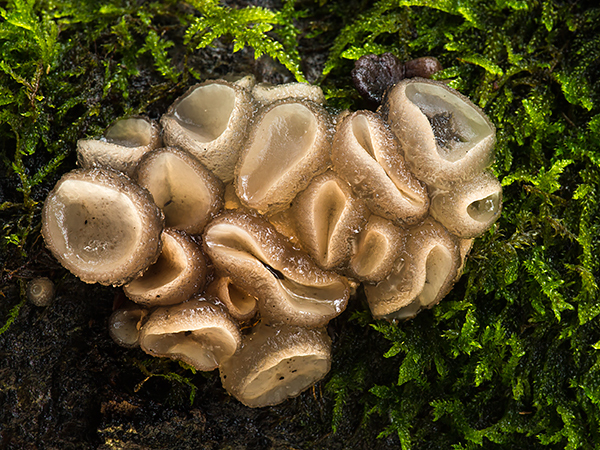 |
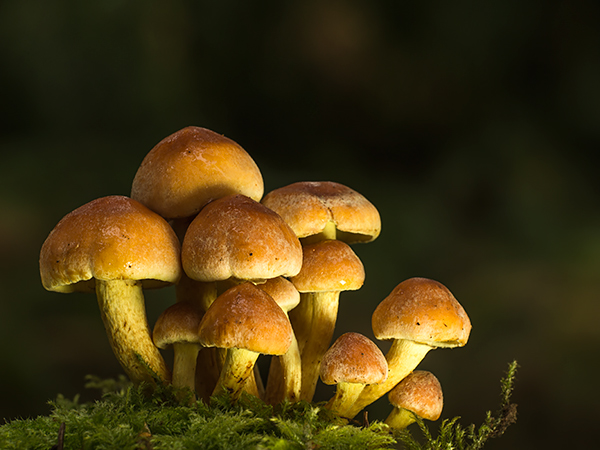 |
| Above is Sulphur Tufts (also called Sulpher Caps) which are a common fungi which is fairly easy to find, whilst below is Horn of Plenty which is is according to my fungi book a delicate and delicious tasting mushroom. |
---87P8158.jpg) |
---66O2062.jpg) |
|
Many fungi only last a few days, but one exception to this is bracket fungi which can live for years on branches of both living and dead trees. They are often hard to photograph and look brown and relatively uninteresting, above is the underside of Blushing Bracket fungi.
|
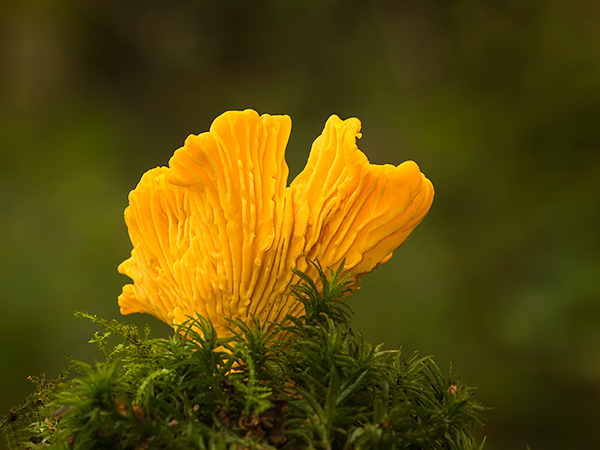 |
---C59O4262.jpg) |
|
Above is Black Witches Butter which is very similar to "King Alfreds Cakes" but can be told apart by its softer and more jelly like feel especially when the fungi is young. Both fungi are similar in size and grow from about 10 mm up to about 75 mm in diameter, "King Alfreds Cakes" are very hard and where used as fire lighters many years ago. Below is Amethyst Deceiver, a very small delicate species that looks brown from several angles. There are several "deceiver species" of which the Amethyst is the most well known. It is eatable, but like all of the fungi I photographed it was left where it was found. |
---Z7W8213.jpg) |
| There are many fungi that have a colour that varries are in the range, pink, lilac, rose through to purple, one of these species is the Rose Rusual below which was photographed in Kent. |
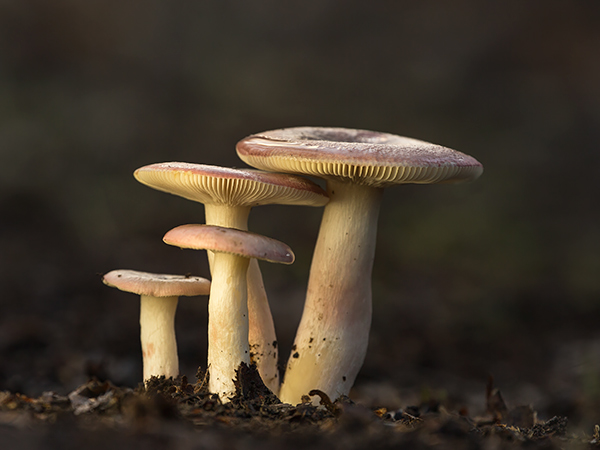 |
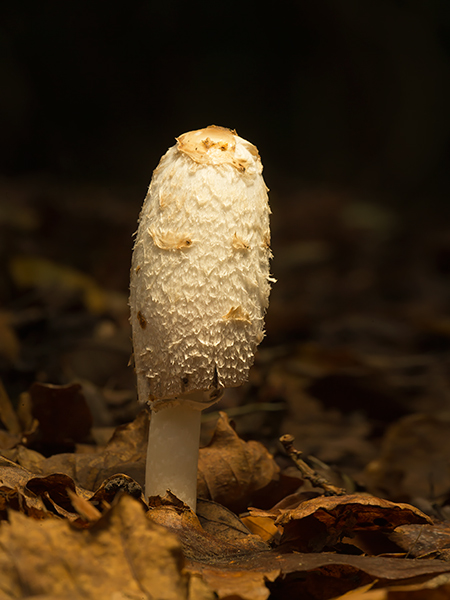 |
| Above is a Shaggy Inkcap which is another of the easier to recognise species and is relatively common. Below is the much harder to find is the Stinkhorn. |
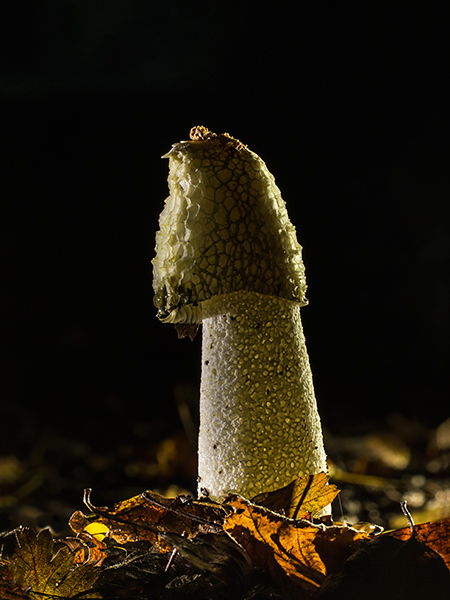 |
---66O8007.jpg) |
| Above is a Oyster fungi a soft delicate fungi that was quite large (the image was taken using a polarising filter to try and bring out more detail in the contrasting colours and textures. Below is a Jelly Ear which I think only grows on the wood from Elder trees. |
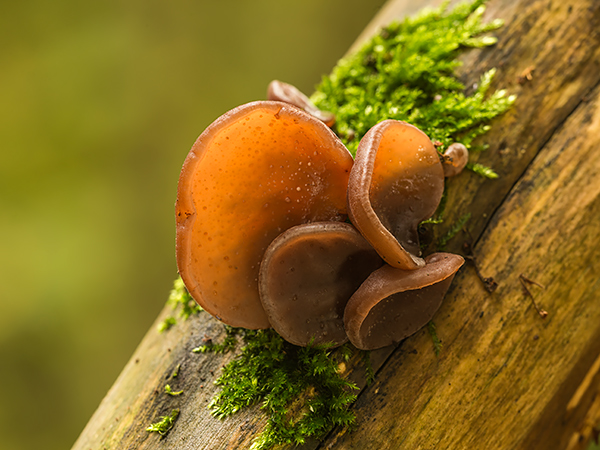 |
| I am really pleased with my images from the 2015 fungi season (and there is still a few more weeks to go). During the past month or so, I have visited several sites local to me in Leicestershire, Cambridgeshire and Northamptonshire along with two trips to well known fungi locations in the New Forest and West Sussex. I must have photographed around 40 different species including some common species which I have photographed before. |
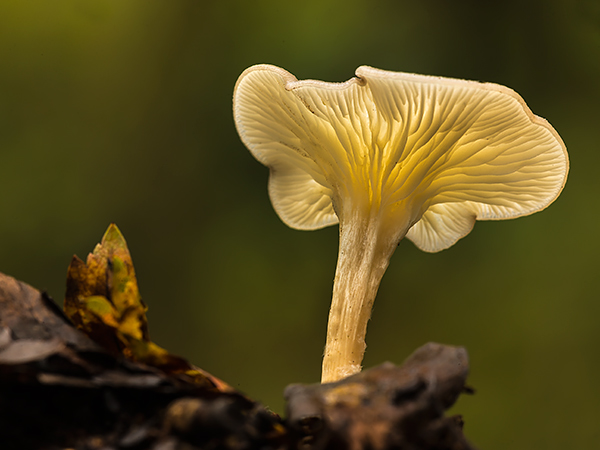 |
| Above is an Amanita species, but I am unsure about the exact identification, below is the same fungi taken less than a metre away but looking straight down at the head growing out of the leaf litter. |
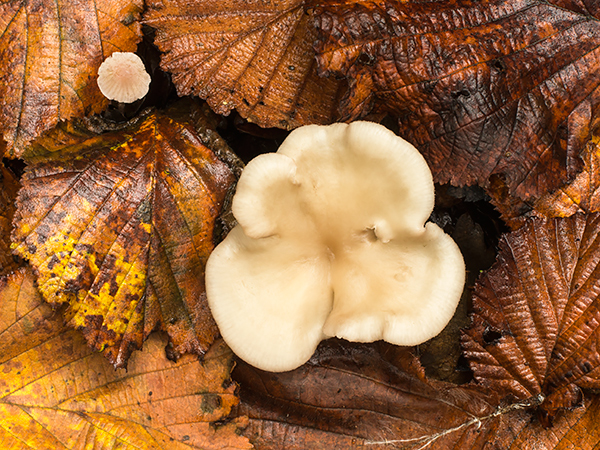 |
